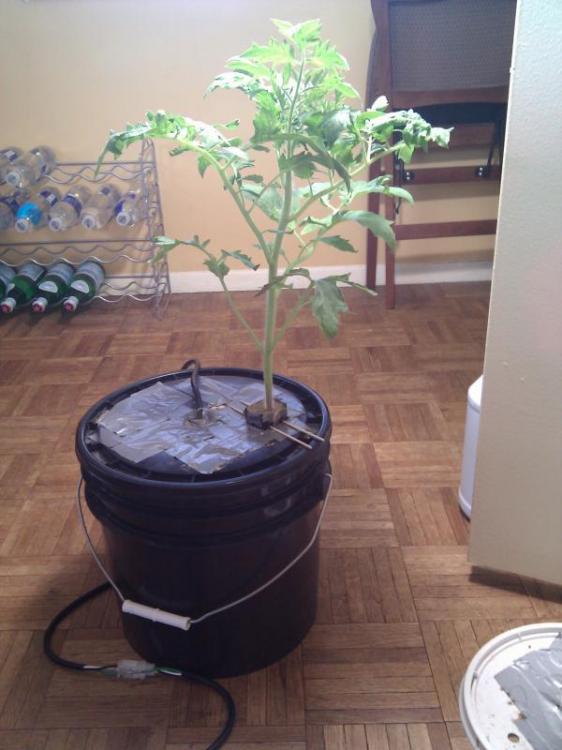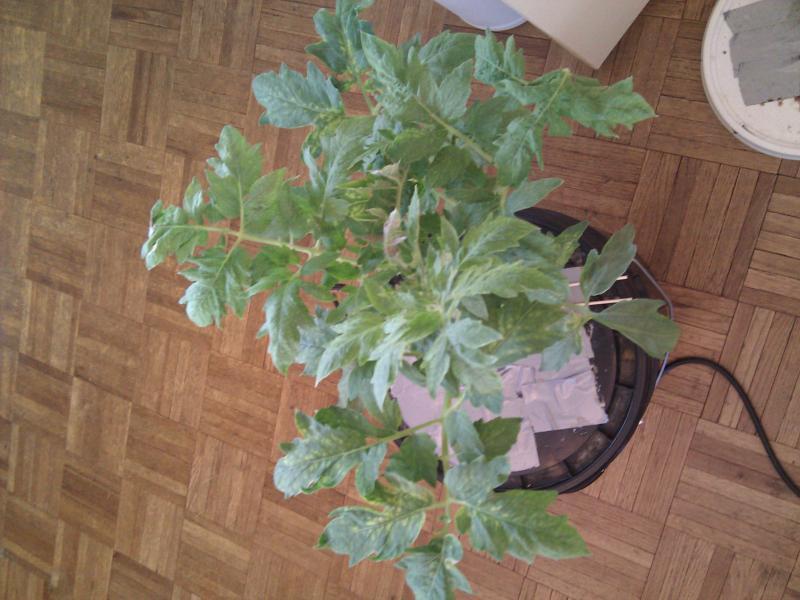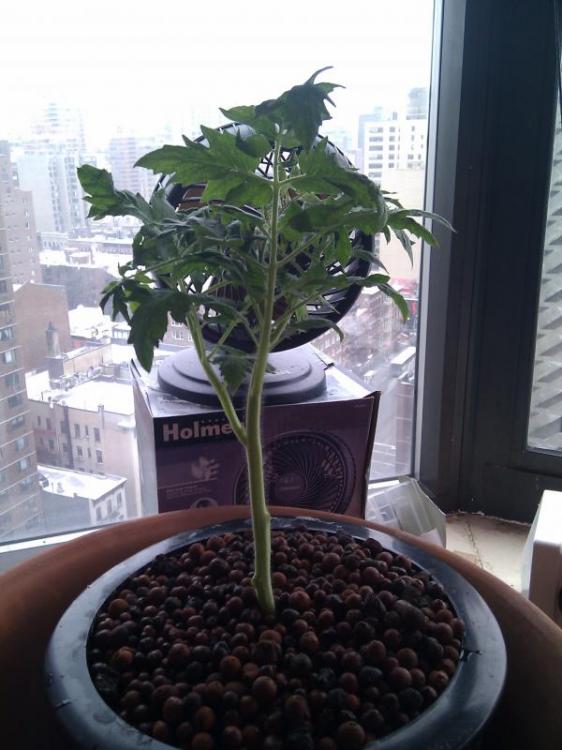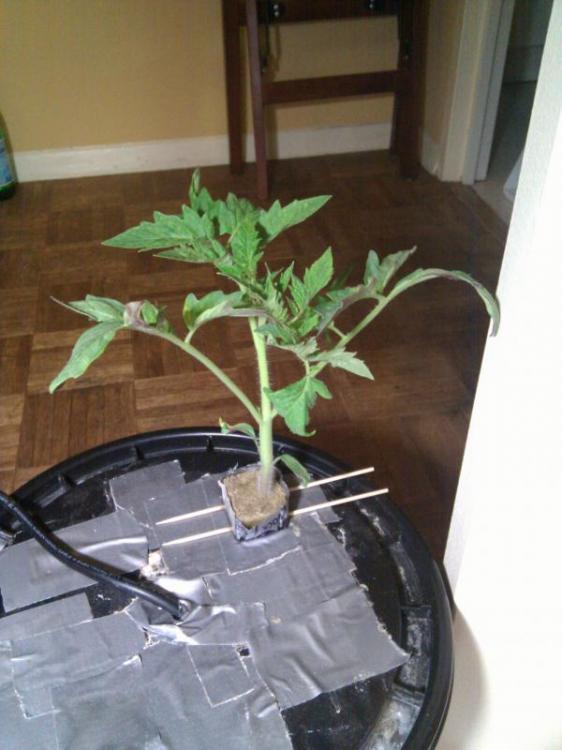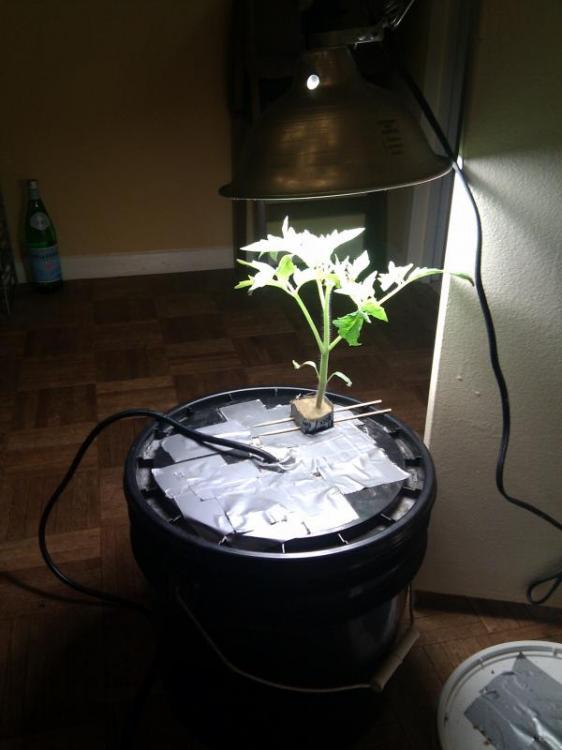
KennethT
participating member-
Posts
6,926 -
Joined
-
Last visited
Content Type
Profiles
Forums
Store
Help Articles
Everything posted by KennethT
-
When they first started, they were very good at providing produce you'd pick yourself, even if you were picky. As time has gone by, they're a little less selective, but overall, the produce is still pretty decent. They've also instituted a star rating system, which is a pretty good indicator of overall quality. Some things they repackage in bags depending on what you want, whereas others come prepackaged from the producer... Like ginger, some mushrooms, and Brussels sprouts. Also, if something comes in that's damaged, or not to your liking, you just send them an email and they take off the charge immediately. They're very good about that.
-
Here in NY, I've been using Fresh Direct for years. In general, I find them pretty good. I think they're produce quality was a bit better when they first started years ago, but it's still pretty good - especially if they have a higher star rating. Their produce, meat and fish are definitely better than the local supermarkets, but that's not saying much. I still prefer going to a specialty supermarket, like Fairway here, or a dedicated butcher or fish monger, but short of that, I'd recommend them.
-
So, an update on the windowsill tomato plant... Here are a couple of pictures, as of yesterday.. you can see how much it's grown in a short period of time! Today, I finally had the windowsill setup finished, so I trimmed the bottom few branches, and planted the roots and a good part of the lower stem into the rocks. I should have taken a photo of the root zone... it looks fantastic! Lots of growth with tons of fine hairs.
-
I've done the 10 hours at 80C, but find that the meat winds up drier than it does at 60degC. I also cook it skin off, but I'll take the skin, boil it (or even better pressure cook) in salty water until it's almost falling apart tender- you have to be very careful when taking it out of the pot so it doesn't tear. Let it cool on a rack, and when at room temp, scrape all the fat off with a butter knife or spatula... then dehdrate in a 250degF oven until it's hard and looks like a shrinky-dink. At you can then put it in 375degF oil and it puffs very well.
-
I've done MC's 140F/72 hour and it was ridiculous. The fat is very delicate at this point, and the whole thing melts in your mouth.
-
I wonder if you could put a bunch of the leaf flakes in a mortar/pestle or a spice grinder and grind it into glitter?
-
Your description of the heat sealer is common - I would run into the same problem with my food saver - but the foodsaver's sealing time is not adjustable. Instead, I would use a damp towel and wipe the heating element in between seals to get rid of some of the excess heat when doing multiple seals.
-
I don't think coriander likes lots of heat... I tried growing it in my sunny windowsill many years ago with little success. It gets very hot by the windowsill, and the coriander would constantly bolt and go to seed after a very short time.
-
It is a Goose Creek plant. A few years ago, I got a Goose Creek plant from Laurel's, and the tomatoes were probably the best I've ever had - and it did quite well growing indoors in my apartment - although, when it reached the ceiling, I mistakenly topped it thinking it would stop growing, but instead it turned into a giant tomato hedge and took over half the living room. When I finally took it down many months later, I found tons of rotten tomatoes deep inside the bush - I had no idea they were even there because they were obscured by all the foliage! Anyway, Laurel doesn't carry the Goose Creek anymore, but I was able to find seeds online about a year ago, and they've sat while I haven't had the time to do anything with them ever since. I had a few days off around New Year's, so I decided to give it a go. So, this year, I'm trying something new. It will stay as an indoor plant - I have a very sunny southern facing window with no obstructions, and supplementing that light is a very powerful LED grow light. It's so strong, you can see it from the street - across the avenue - and I'm on the 21st floor set in quite a ways from the street! But now, I have installed a string line to the ceiling - the kind professional greenhouse tomato growers use... you train the vine up the string, then, as it reaches the ceiling, you let some string out every few days. From what I remember about this plant a few years ago, only the top 4-6 feet of plant had good leaves - the ones further down the vine always died off - and that's supposed to happen - in my reading, it seems that greenhouse growers always trim off the bottom leaves only leaving the really good top leaves for catching the light. It's always tough to time when to sow/plant out if you're planting outside - so many more variables to consider. One thing I like about "greenhouse growing" is that it's a closed system - you can almost treat it like any mechanical system which appeals to me. Plus, no dirty fingernails.
-
It's pretty cold this time of year in New York - so what to do? Plant a tomato plant! This plant was planted from seed just after New Year's - it took about 4-5 days to germinate, and look at it now! The bucket is an improvised hydroponic cloning machine - inside is nutrient liquid, a submersible pump and manifold with a bunch of spray nozzles hyperoxygenating the liquid and spraying the roots... for now, the grow light has been on 24/7 - but once it gets a little older, I'll put the lights on a 18/6 program until the plant gets to be about 4-5 feet tall, then I'll change the lights to 12/12 to stimulate flowering.
-
I've noticed the brown goo on the outside of long cooked meats as well. To me, it looks like coagulated protein - like if you took meat drippings and brought it to a boil - you'd see the same stuff. Definitely not harmful, and, as Nickrey pointed out a long time ago, you can fry in a little oil and it turns into fond which you can deglaze and make a nice pan sauce from.
-
I love lime leaves - and your haul is incredible! If you can get it, galangal is a great match with kaffir lime leaves...
-
Djyee - you read my mind... It is actually a truffled Mac n cheese, made with aged gruyere and parmigiano reggiano. All good ideas... Unfortunately I've got no more time for trials. I may wind up having time/space to make the pasta fresh... We'll see... In the meantime, if anyone has other ideas, keep 'em coming!
-
That's a good idea - I can heat up some water in the microwave and use that to refresh the pasta before adding the sauce. Pasta cooking water not necessary for this application, but could do the same, in theory - just chill and save the pasta water and reheat that in the microwave.... Thanks
-
I am having a few friends over for NYE dinner tonight - one is a vegetarian who loves cheese, so I figured I'd make her a truffled Mac n cheese for one of the courses. I have a very small kitchen and only 3 usable burners, two if I have a large pot going. I'd like to, ideally, cook the pasta earlier today and chill it so I don't need to worry about cooking it while I'm prepping the course for everyone else. Is there any way to do this and still have it come out well? For those with experience, I'm making a modern cheese sauce using sodium citrate. Would it be ok if I were to fold cold pasta into the hot sauce or would it start clumping/seizing due to the cold shock?
-
Also, why did you bag them before freezing? I would think it would be better to freeze them naked, then bag once frozen, as the bag is slightly insulative and will lengthen freezing time a bit. Also, doesn't freezer burn come from drying out/oxidation over long periods of time, not from extreme cold? I think what you're thinking of is frostbite, which I don't think affects non-living meat. Do watch out for your fingers though!
-
NYC bday party for 10 or so, Lincoln private room? Others?
KennethT replied to a topic in New York: Dining
I second Il Buco. A few years ago, my wife threw me a surprise bday party down there and it was such a great success, we did it again the following year (not as a surprise though). -
I once did a creme fraiche mousse (fitting to go after the moose) dusted with matcha tea powder sitting on a lemon tea cake base that was a nice transition. Also, I don't know your location, but if you can get decent strawberries, you can do strawberries drizzled with a traditional balsamic (the thick syrupy stuff) in a caramel lace bowl. The bowl always impresses people, and is simple to make - make a dark caramel, then with a whisk, drizzle either onto an inflated balloon, or a small bowl (slightly oiled). either slowly deflate the balloon (with a pin near the knot where the rubber is thickest) or just slide the caramel bowl out of the oiled bowl when cool.
-
Check the original SV index page - there's tons of info on pork belly... http://forums.egullet.org/topic/136274-sous-vide-index/#entry1777784
-
I've also been including stock and getting better results. I do a hainanese chicken rice by making a very concentrated chicken stock with shallot, garlic and ginger as aromatics. Stock goes in the bag with chicken breast - meat comes out great... then the stock for cooking gets recombined with the master batch of stock of which some is used to cook the rice. The stock gets more and more chicken-y as time goes on, so once in a while I'll refresh the aromatics and top up with a bit of water.
-
I've worked with dry ice quite a bit in the past. I find the way to get the best conduction and heat transfer is to put chunks of dry ice in the food processor for a second or two - it very easily becomes "dry snow" which you can then dredge your steak in and have all surfaces in contact. I would do the steak naked rather than presealed since the bag will be a insulator and not all direct contact of the snow. Also, the snow is VERY cold, which would make the bag very brittle.
-
If you're just looking for fat (and not cracklings) I'd like to suggest nathanm's idea of the "fat shake". Rough chop the fat/skin and put in a blender, covering with water. Blend until completely liquified then pour into an SV bag or you can do covered on the stovetop. Makes the most yield I've ever seen.
-
Sam, sounds great - I like the idea of pressure steamed potatoes.. Definitely have to try it sometime!
-
Several years ago, I bought a "hose-torch" (made by Bernzomatic) for my propane canister - it's basically the gas valve connected to a 3 foot long hose, which is terminted with a "swirl-torch". I bought it because I thought it would be more convenient to sear things with the canister hanging on my belt just holding the light torch in my hand - plus, as anyone who has done lots of sweat-plumbing, holding the canister sideways with attached normal torch pointing down doesn't always work too well. The swirl-torch is advertised as making a more even and hotter flame for use with plumbing... but I find it works very well for searing post-SV stuff. I use it for all searing purposes, and I have never had a torch taste yet. It does take a bit of practice - I usually stay farther away from the food than I'd normally think was necessary and I get nice even browning with a very small amount little charred freckles so to speak. If there are no spices or ground pepper, then I can really blast a steak and get a really good crust without overcooking the interior. Spices/pepper tend to burn easily.
-
What is MP? I got the information to apply it dry directly from one of Ajinomoto's north american sales reps... I commonly use it dry when I remove duck breast skin - remove the fat, then glue it back on to the raw duck breast.


